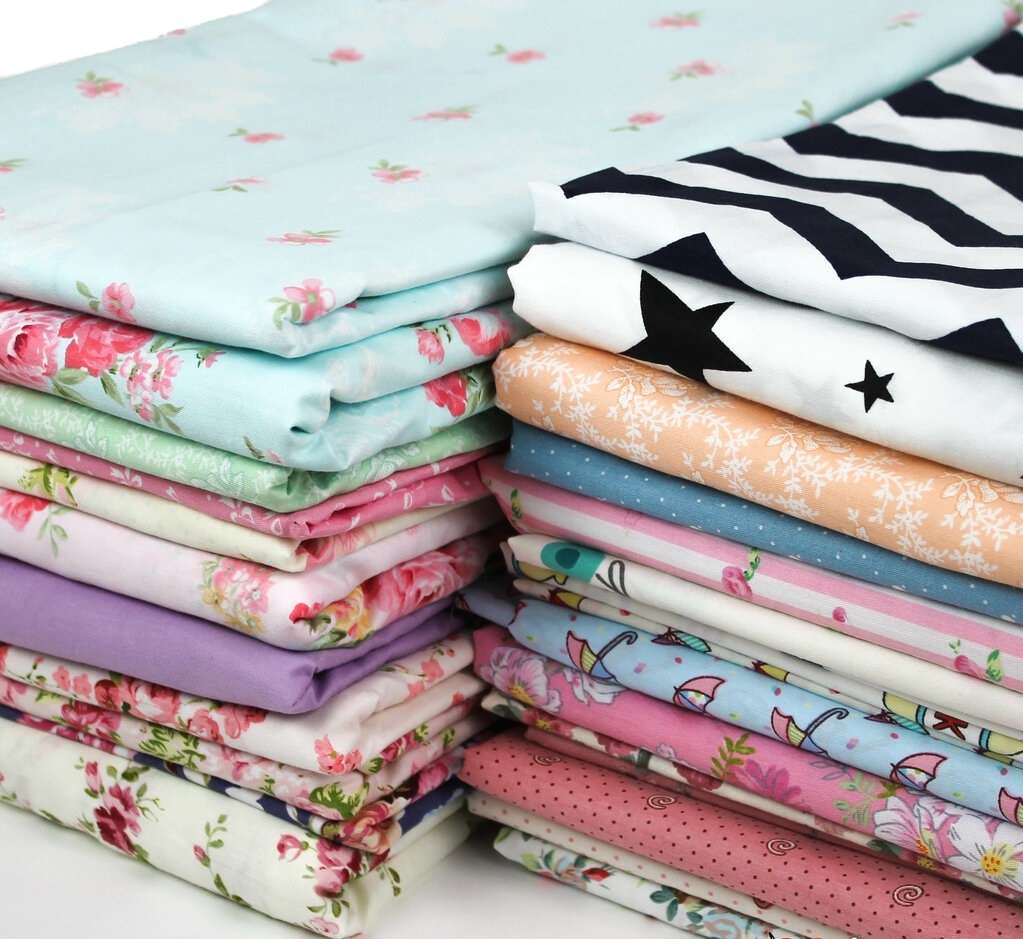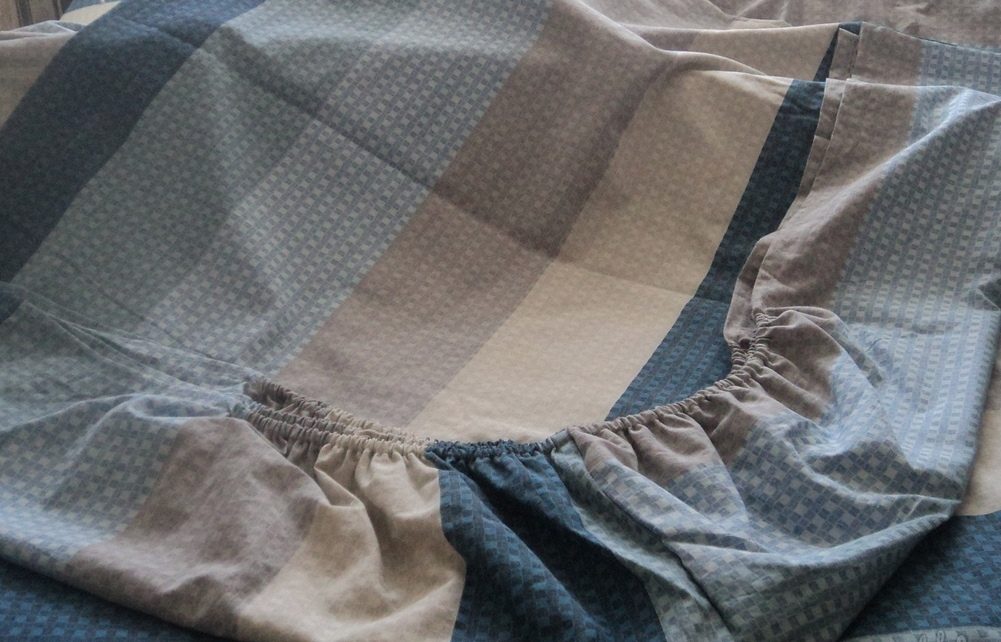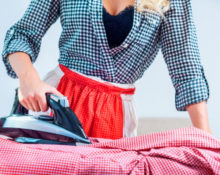It seems that there is nothing difficult in sewing a sheet: I cut out a rectangle and processed the edges. But not everything is so simple. Modern beds and mattresses are so different in length, width and height that you will have to carefully select the product. To avoid making mistakes and damaging the fabric, we recommend that you read this article carefully.
How to sew a sheet
Any work begins with preparation. Sewing bedding is no exception. So, it is necessary:
- choose material;
- measure the mattress (length, width, height);
- decide on the type of sheet (with elastic or regular);
- decide whether decorative elements will be used.
In addition, you need to prepare your tools (tailor's scissors, threads to match the material, a ruler or measuring tape, chalk or pencil) and check that the sewing machine is ready for use.

What to sew from
You can buy any material. The main thing is that it is pleasant to the touch, easy to use and wear-resistant. Consider also how much money you are willing to spend on fabric.
For example, a sheet made of silk is luxurious. It's not cheap, but natural silk looks great and doesn't cause allergic reactions. True, it’s unusual to sleep on it out of habit.

A more down-to-earth and practical option is calico. This is a thick cotton fabric with a plain weave. Calico is called the ideal fabric for bedding. Linen made from it does not shrink, does not fade (although much depends on the quality of dyeing) and lasts for several years. And calico is not as expensive as silk.

Satin is another natural material. It differs from calico in the way the threads are intertwined. Satin is soft and smooth to the touch, a bit like silk. Wear resistance is high.

Budget fabric - chintz. This is a thin natural material. It's nice to sleep on a chintz sheet, but it won't last long.

Other materials will also work:
- linen - natural is expensive, rough to the touch and wrinkles;
- flannel is a soft fabric, good for sewing children's bedding;
- poplin - cotton material similar to calico;
- bamboo is an expensive but wear-resistant material made from the leaves and stems of the grass of the same name;
- microfiber is a synthetic material that can be of low quality and cheap (if there are no natural ingredients in the composition) or immodestly expensive, but safe for health (when cotton or linen is present).
Deciding which material to choose depends on your own preferences, financial capabilities and experience. If you are a beginner seamstress, buy budget fabrics that are easy to work with (for example, satin).
Do I need a pattern?
If the quality of the finished product does not matter at all, then there is no need to spend time on the pattern. But there is a risk that you will never get such a sheet out of the closet: it is simply not suitable for a mattress.So is there any point in neglecting cutting?
An experienced seamstress will tell you that you need to cut, even if this is the hundredth sheet you have sewn with your own hands. There are several reasons:
- If you are sewing from large fabric, the pattern allows you to use it sparingly.
- The risk that the sheet will be too short, narrow or long is reduced to zero.
- When an unusual shape is needed (for example, if the bed is oval), the pattern will help you navigate correctly and not make a mistake with the dimensions.
There are two ways to cut a sheet:
- You can measure the mattress and bed, add extra centimeters (to fold the sheet).
- An easier way is to take the sheet that you usually use to make your bed and transfer its dimensions to the fabric.
Regardless of how you cut, leave 1-2 cm on each side of the product as a hem allowance.
What else to consider: shape and size of the mattress, fabric color
If 20-30 years ago mattresses were low (no more than 10-15 cm in height), then modern models are very different. Thus, the height of orthopedic mattresses can reach 25-30 cm. This is important to take into account when cutting, otherwise the sheet will be small. Don’t forget about the width, especially if you are sewing a sheet for a Euro size mattress, and the length.
Shape matters too
Round bed? This happens in our world too. Remember: for a non-standard bed it is better to sew a sheet with an elastic band. However, for standard rectangular furniture this element on the sheet is also not superfluous.

Colors
Here you need to remember not only about your own desires, but also about the rest of the bedding. If you are sewing a set, buy one piece of fabric and cut from it.When you need a separate sheet, try to choose a neutral-colored fabric that will coordinate with most of the other bedding sets in your home.

Fabric texture
It is logical that no one will combine a silk sheet and a cotton duvet cover in one set. But this rule also applies to other materials. Consider what materials your bedding is made from. More calico or chintz? So, sew a sheet from the same fabrics.
Let's move on to sewing
After it is tightly lined, the “blank” is cut out. Next, you need to make a test stitch on a machine (an unnecessary piece of scrap is suitable for this). If all is well, proceed to the main sewing.
A rectangular sheet is sewn by folding the edges (allowances are made for this purpose). Start with the narrow part. Fold the edge 0.5 cm, and then again 0.6 cm. Make a stitch. If the first seams are difficult, you can pre-baste the edge by hand and remove these threads after machine stitching.
Sewing a sheet with an elastic band is more difficult. Here you need to calculate not only the fabric consumption, but also the amount of elastic. There are two options:
- Sew elastic around the entire perimeter of the sheet. This is often done when sewing children's bedding, and also when the mattress is thin. The calculation is as follows: measure the perimeter of the mattress and take elastic bands 10% smaller (for tightening).
- Sew elastic at the corners. Convenient for thick mattresses: with their weight they press down the sheet. Here you need 30-40 cm of elastic for each corner.
You can’t take an elastic band out of children’s tights and sew it onto a sheet. You need to use a new, durable underwear elastic that will hold the fabric well.
If the elastic is sewn around with a drawstring, the operating algorithm is as follows:
- Make a double hem around the perimeter of the fabric. Width - at least 1 cm.Leave an “entry” for the pin.
- Iron the sheet. If there was a baste, remove the excess threads.
- Take an elastic band, secure a pin at the edge and carefully insert it. Sew the edges of the elastic. Process the "entrance" for the pin.

The easiest way is to sew elastic at the corners. In this case, the drawstring is made only at the corners, and along the entire remaining length the edges are folded as usual.

Decorative elements
There are decorative elements that do not interfere with lying on the sheet, but at the same time decorate it. For example, lace is an excellent solution for light-colored bedding. Another option is embroidery on the sides. An excellent decoration for sheets used to cover high mattresses.
Decorative elements can be used, but they should be selected carefully. The main thing is that they do not interfere with sleep.

Useful tips
There are many tricks you can use to make the sewing process easier and extend the life of your sheets. Let's note the popular ones:
- Before sewing, you need to wash the fabric in warm water with soap, dry and iron. The material will shrink a little and become softer. It will be easier to work with it, and the measurements will be more accurate.
- After sewing, all stitches need to be ironed. This way they will look neat.
- To ensure an even stitch, you can take short breaks while sewing. The extra 3-4 knots are invisible, and the crooked seam immediately catches the eye.
- A test stitch should be made on the remnants of the fabric you plan to work with. This way you will understand how suitable the threads and needle are for working with this material.
- Pay attention to the selection of tools and consumables. The scissors are only sharp, the needle in the machine is without any irregularities and is also very sharp. It is better to buy threads along with the fabric, and before purchasing, ask the seller which ones will exactly fit.
Video “How to sew a sheet yourself”


 0
0



